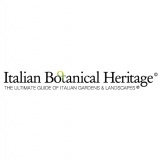
 Italian Botanical Heritage
Italian Botanical Heritage
Italian gardens and parks: Ducal Park of Pavullo nel Frignano
- WTI Magazine #139 May 22, 2021
-

 Italian Botanical Heritage
Italian Botanical Heritage
The Ducal Park of Pavullo nel Frignanno in the Modena province in Emilia Romagna has an extension of 14 hectares, from Palazzo Ducale and Via Giardini till the slopes of Monte dei Frati, till fading in the wood.
Its story is connected to the one of Palazzo Ducale, built by the duke Francesco IV d’Este (1779-1846) as a vacation residence for the court in the mountains in order to give value to the further and poorest area of the duchy. At the time it was the easiest locality to reach from Modena, thanks to via Giardini, which was realized in the second half of the 18th century.
The palace, simple and austere, was designed by the engineer Sante Cavani according to the rules of neoclassical architecture. The works started at the end of 1830, then stopped in 1835, started again in 1838 and ended only in Autumn 1844. The park started to be built in 1843, by the ducal head gardener Karl Huller, who carried out the plants’ implantation after the death of Francesco IV until the fall of the duchy in 1859.
After the death of Francesco IV in 1846, his son and successor Francesco V carried on using it as Summer residence till the Unification of Italy.
In its moment of greatest splendor, the park extended itself for tens of hectares around the palace. In the back, towards the mountain, Huller created a landscape garden, with groves, spots of conifers, clearings, rocks and streams. At the front, twelve hectares of meadows and fields, where grazed little Dalmatian horses. In the vicinities of the palace, lastly, he realized some neoclassical flowerbeds and at the front an ornamental garden with flowerbeds of annual and bulbous plants and an arboreal gallery to make carriages enter.
In about twenty years, Huller planted thousands of trees and bushes: numerous conifers (red and white pines, black and Scots pines, larches, cedar trees), broad leaved trees typical of the Po valley’s landscape (elms, lindens, ashes, mountain-, Norway-,hedge- maple trees) and exotic ones (honey locusts, catalpa, downy oaks with pink flowers, weeping willows, primroses, ecc.).
The original composition of the park was richer than the actual one: there were more conifers, which were loved by Francesco IV and cut down for their wood in the last years. But the park still includes most of the vegetation types of the Pavullo area: the oak wood, the wood of conifers, the wood of broad leaved plants with a prevalence of maple trees, ashes and Turkey oaks.
At the end of the dukedom, the park, which had been opened to the public, was abandoned until the twenties of last century when Corpo Forestale dello Stato carried out reforestation activities, altering the original design of the park. In 2008 it underwent huge redevelopment interventions by the council administration of Pavullo.
Nowadays, the restructured part is behind the palace, to which it is connected through a terrace, which was a sitting room in the open air at the times of the duchy. In the lower part, there is a wide grassy clearing, where majestic arboreal specimens grow. There are exotic ones (cedars of Lebanon, among them the monumental “Pinone”, sequoias from California, giant sequoias, giant thuja), and native ones (lindens, beech trees, Mountain maples), most of them are from the original implantation. In the northern part of the clearing, there is a fountain with a circular basin, dating back to the twenties and just above it another fountain with continuous jet. Above the clearing there is a dense arboreal cover, which is formed by conifers (red firs, black and Scots pines) and by a high forest of Quercus cerris.